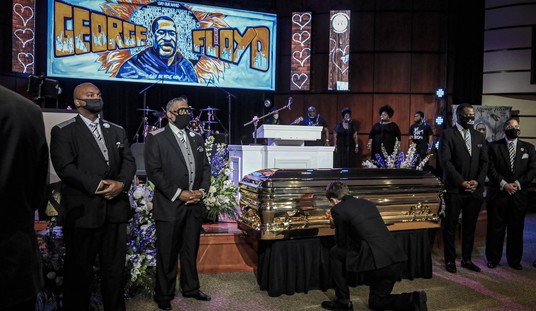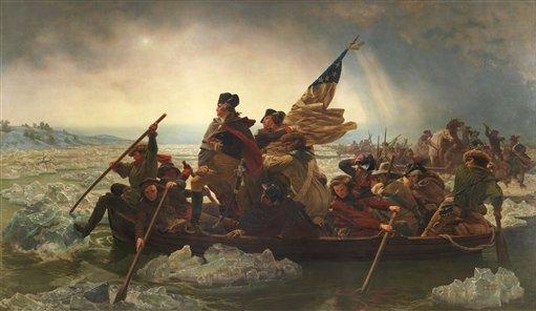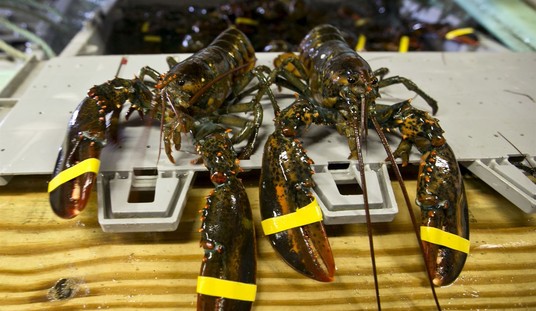
It’s safe to say that we have it pretty good here in the United States, especially during the holidays. We live in the richest country in the world, which provides the most opportunities and options for the individual to succeed (despite the active opposition of the left in creating them).
So it was that while RedState Department of History staff were surfing the web on their lunch hours to get an early start on holiday shopping, we were left to reflect on a very somber anniversary, from a time when simply surviving a trip to the store couldn’t be taken for granted.
During the last days of the Second World War, Great Britain fell victim to a series of quite literally unstoppable attacks, from the V2 ballistic missile.
In 1944, a test V2 became the first man-made object to enter space when it was fired vertically – and on this day in 1944, another V2 caused the largest mass casualties of any German terror weapon when it scored a direct hit on a Woolworth’s store in the South London neighborhood of New Cross, killing 168 people.
The shoppers were there because a consignment of saucepans had been made available for consumer purchase — a nearly unheard-of event in Britain at the time, which was living under a system which rationed the overwhelming majority of consumer goods.
They gathered with no idea what was about to happen. Tony Rollins, who was 13 at the time and had just sold a model airplane he built at a shop across the street from the Woolworth’s, describes what he saw:
“It was Saturday and I visited the shop to deliver some models and earn some pocket money. I boarded a tram heading down towards Deptford Broadway. I got off at my stop and started to walk the few hundred yards to my home in Friendly St when there was a huge explosion.
The V2s always exploded with two “crumps” one quickly followed by a second. I knew immediately it was a V2 and as I looked back in the direction of the noise I saw a huge tower of smoke with all sorts of pieces turning and twisting and glinting heading skyward.
I turned and ran back to the scene. It took me about 10 minutes.
I shall never forget what I witnessed.
The front of the shop I had sold my aeroplanes to was completely blown in,
and on the other side of the road was a huge smouldering crater.
Sheets of corrugated steel had been placed along some of the gutters to cover what was left of people and blood was seeping out from beneath. There was debris everywhere.
I saw several people dead beneath telegraph poles and there were bodies and wounded and maimed laying randomly all over the place.
Everybody who could was roped in to help clear debris and I did what I was asked to give a hand.”
The V2 was literally unstoppable. The world’s first guided ballistic missile, it had a top speed of over 3,500 miles per hour and a range of 200 miles, which made it quite immune to the air defenses of the day. It was launched as part of a terror bombing campaign which also utilized the V1 “Doodlebug” rocket, which was much slower and could be intercepted by Allied air defenses. The V2 was a completely different matter.
This map shows the location of every V2 strike in or near the United Kingdom from the first strike on September 8, 1944 to the last on March 27, 1945.
When the attacks began, a bewildered British government speculated that the sudden explosions experienced by citizens were caused by gas explosions. But eventually the government was forced to admit that Britain was again under attack.
There’s another story here as well – why the V2s didn’t kill more people. That was due at least in part to the activities of Eddie Chapman, a double agent code-named “ZigZag” by British intelligence. Chapman, who had a criminal background and had been decorated by the Germans, switched sides and convinced his German handlers that their V2 rockets were falling north of London when in reality they were hitting the center of the city.
As such, the Germans moved their aim south, which put a large number of strikes into the areas south of London and toward the Channel coast. But the fact remained that once a V2 was successfully launched, there was no way to stop it.
Eventually, the men responsible for producing the V2 – built in no small measure by the forced labor of concentration camp inmates – split their future loyalties among the Allies. Wernher von Braun, the mastermind behind the rocket, went to the United States as part of Operation Paperclip and brought about 1,600 of the leading German rocket scientists with him, while the Russians overran the V2 production sites and took them back to Russia along with those scientists who didn’t move west.
Their competition would resume and last another quarter century through the Space Race. Eventually, von Braun’s greatest achievement, the Saturn V, would land the first men on the moon.
Happy Sunday and enjoy today’s open thread!














Join the conversation as a VIP Member